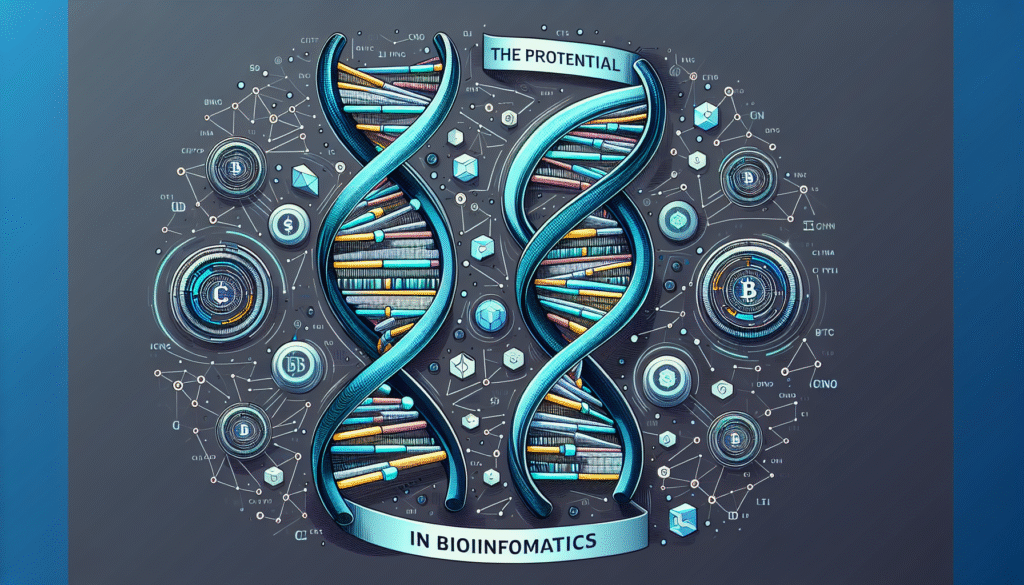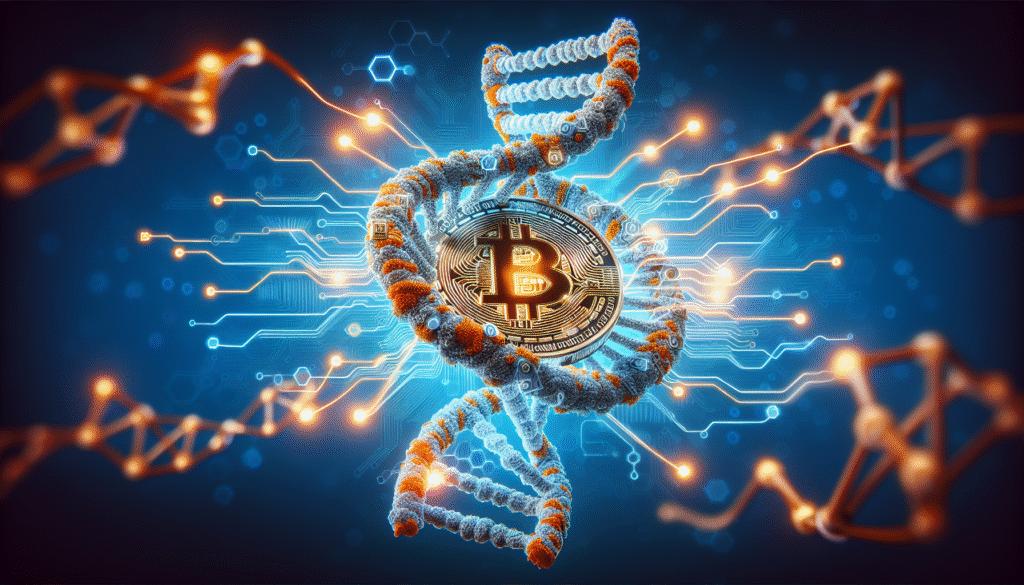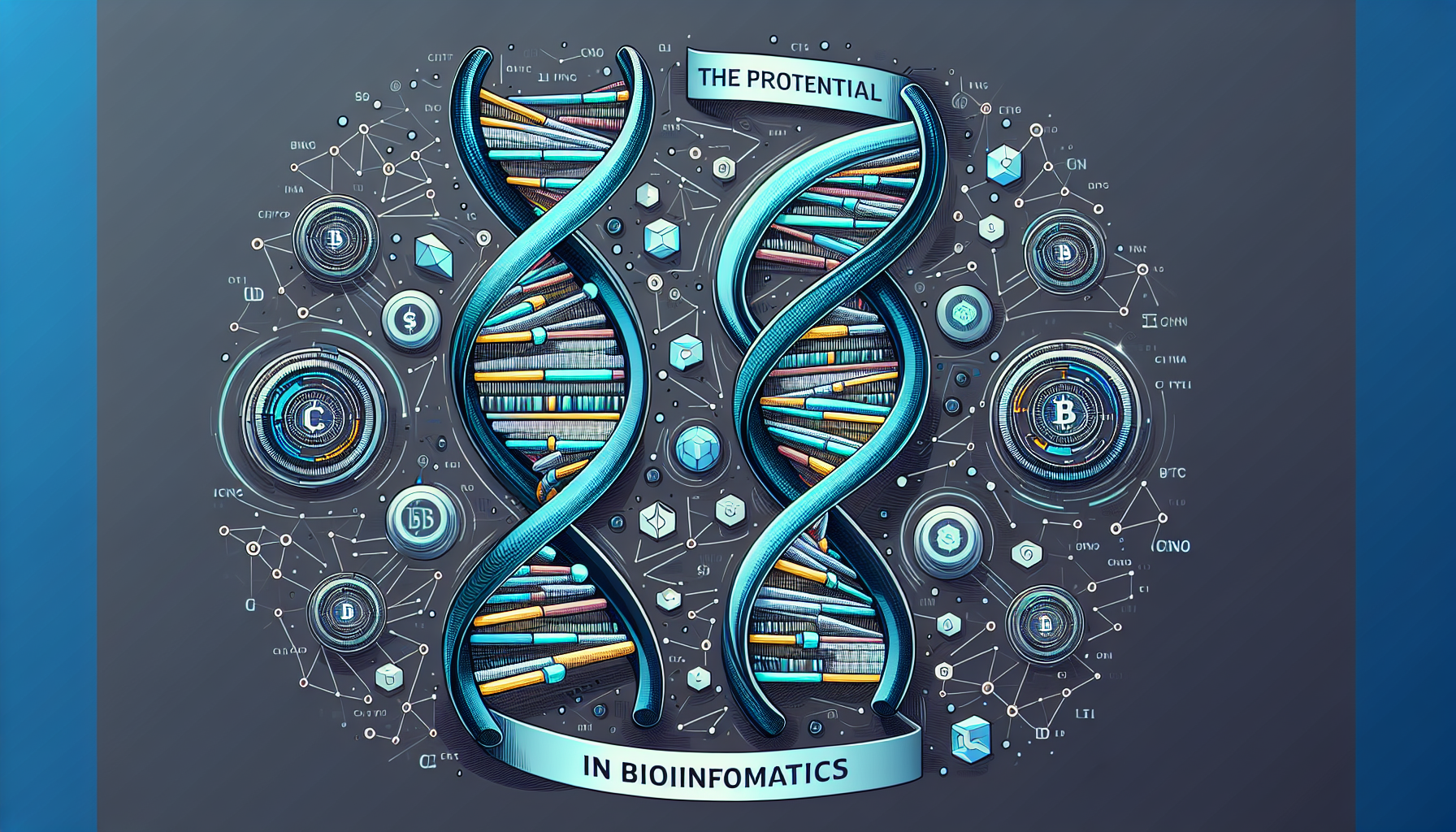Have you ever wondered about the intersection of cryptocurrency and bioinformatics? It’s a unique combination that, at first glance, seems as if it belongs to two entirely different worlds. Yet, as both fields advance at an unprecedented pace, their paths are beginning to intertwine in fascinating ways. Your curiosity about these intersections might lead you to explore the possibilities that this fusion offers, looking for new solutions to age-old problems.

Understanding Crypto: A Quick Primer
Cryptocurrency is a digital or virtual form of currency that uses cryptography for security. It’s primarily decentralized and operates on a technology called blockchain, which is essentially a distributed ledger enforced by a network of computers, or nodes.
The Blockchain Technology
Blockchain is pretty much the backbone of most cryptocurrencies, including Bitcoin and Ethereum. On a blockchain, data is stored in blocks that are then chained together, hence the name. This technology ensures that records are securely stored, updated, and transparent, making it harder for fraud or manipulation to occur.
The Role of Cryptocurrencies
Cryptocurrencies can serve a variety of functions. They can act as a medium of exchange, a store of value, or a unit of account. Beyond serving as a digital currency, they have sparked interest in other sectors for their potential to revolutionize how data is handled, owing to their secure and transparent nature.
Unveiling Bioinformatics: A Brief Overview
Bioinformatics encompasses the application of computational techniques to manage, analyze, and interpret biological data. It’s a crucial field that contributes to areas such as genomics, drug discovery, and personalized medicine.
Data in Bioinformatics
The key component in bioinformatics is data. You’re looking at massive datasets, whether they’re genomic sequences, protein interactions, or patient records. The challenge lies in processing this vast amount of data efficiently and securely while deriving meaningful insights.
Applications of Bioinformatics
Bioinformatics isn’t just about crunching numbers and sequences. It plays a critical role in improving healthcare outcomes by enabling personalized medicine, predicting disease patterns, and identifying novel drug targets.
Bridging the Gap: Crypto Meets Bioinformatics
Bringing together the seemingly disparate worlds of crypto and bioinformatics could potentially revolutionize how biological data is managed and shared. But how does the decentralized nature of blockchain technology align with the goals of bioinformatics?
Decentralization in Data Sharing
One of the most compelling aspects of blockchain is its decentralized nature, which resonates well with the needs for data sharing in bioinformatics. You often face the challenge of securely sharing sensitive data across borders and institutions. Blockchain could provide a solution, allowing data to be shared without compromising privacy or security.
Security and Transparency
In bioinformatics, the integrity and security of data are paramount. With blockchain, once data is recorded, it cannot be altered without leaving a trace. This ensures data transparency and bolsters trust among stakeholders, which is particularly important when it comes to patient data and research results.
Practical Applications: Examples and Case Studies
Exploring practical applications can help visualize how these concepts come together. Let’s look at some scenarios where the integration of cryptocurrency and bioinformatics is blazing new trails.
Secure Genomic Data Storage
Consider genomic data, which is incredibly sensitive and personal. Blockchain can offer a secure platform where individuals can store their genomic data, granting access only to authorized parties. This empowers people with control over their data, maintaining privacy while enabling scientific research.
Drug Discovery and Clinical Trials
Another avenue where blockchain and crypto could shine is in the realm of drug discovery and clinical trials. These processes are costly, time-consuming, and often suffer from lack of transparency. Using blockchain could streamline these operations, ensuring that all parties—pharma companies, researchers, and patients—are on the same page regarding data and its origins.
A Case Study: EncrypGen
One company that is pioneering this space is EncrypGen, which provides a blockchain-based platform for the exchange of genomic data. It allows individuals to sell their anonymous genetic data to researchers, benefiting from the transparency and security blockchain offers.

The Role of Tokens in Bioinformatics
With cryptocurrency comes the concept of tokens, which generate interest for their potential utility in bioinformatics. But how might tokens be integrated into this space?
Incentivizing Data Sharing
Creating a token economy can incentivize data sharing among researchers and institutions. By using tokens as a reward system, participants could be encouraged to share valuable data, contributing to a more collaborative and fruitful scientific community.
Facilitating Transactions
Tokens can also simplify and speed up transactions related to bioinformatics data. Whether it’s purchasing datasets or compensating research participants, cryptocurrency transactions are often quicker and with lower fees compared to traditional financial systems.
Overcoming Challenges and Controversies
While the potential is immense, it’s important to address the challenges and controversies that accompany the fusion of crypto and bioinformatics.
Ethical Concerns
The ethical implications of using blockchain in bioinformatics cannot be overlooked. You may find yourself wrestling with questions about privacy, consent, and the responsible use of genetic data. Constructive dialogue and policy development are crucial in navigating these waters.
Technical Hurdles
From a technical perspective, the integration of crypto into bioinformatics isn’t without its struggles. Issues such as scalability, energy consumption of blockchain, and the complexity of merging these technologies demand innovative solutions.
The Future Landscape: What’s Next?
Looking ahead, the union of crypto and bioinformatics is poised for exciting developments. As research in both fields progresses, you can expect new technologies and applications to emerge, pushing the boundaries of what’s possible.
Potential Innovations
Future innovations may well include enhanced security protocols tailored for bioinformatics data, more sophisticated tokenization models, and hybrid systems that can handle data processing at unprecedented speeds.
Collaborative Frameworks
Interdisciplinary collaboration will be key in driving these advancements. By bringing together minds from fields like computing, genetics, ethics, and beyond, new frameworks can be developed to ensure the effective and ethical integration of these technologies.
Conclusion
The intersection of cryptocurrency and bioinformatics opens up a realm of possibilities, fostering innovation and collaboration that could reshape the landscape of healthcare and science. As you ponder the future, the potential that lies at this crossroad is vast and exciting. Embracing the fusion of these fields could lead to breakthroughs that enhance how we understand and manage biological data, ultimately benefiting humanity as a whole.
By remaining curious and informed, you’ll be well-prepared to explore the profound opportunities that the digital future holds in bioinformatics, with crypto as a pivotal catalyst in this evolution.

